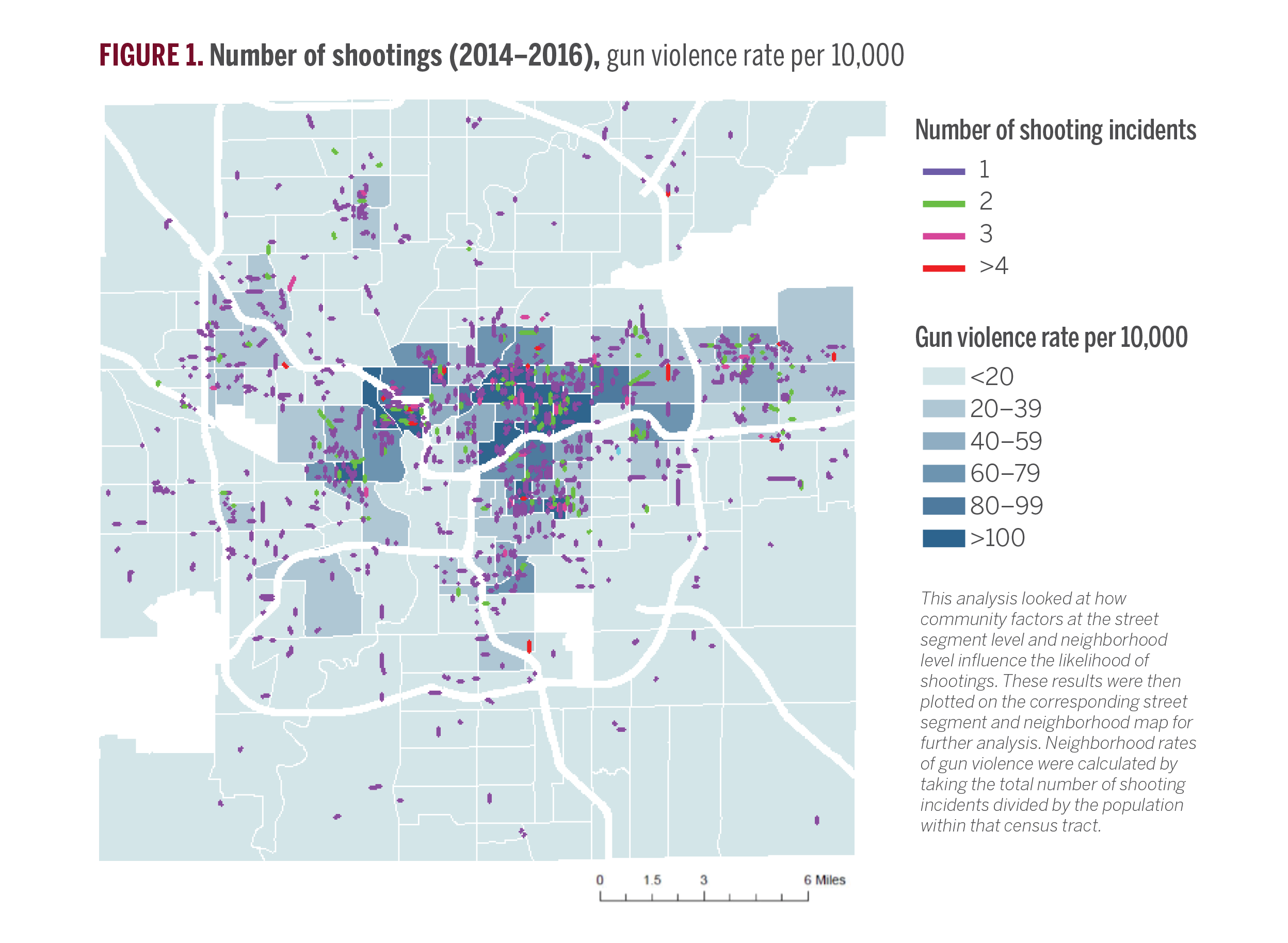INDIANAPOLIS – Analysis of fatal and nonfatal gun violence in Indianapolis from 2014 through 2016 provides a better understanding of where shootings happened in the city and the social factors that contributed to high rates of neighborhood gun violence.
The policy brief from the Center for Health and Justice Research at the IU Public Policy Institute examined data on Indianapolis’ shootings and community factors. By looking at gun violence at the neighborhood and street segment levels, officials can better target their approaches to fit the needs of those areas.
The data showed that 98 percent of Indianapolis’ 53,922 street segments did not experience a shooting from 2014 through 2016. Of the 929 street segments that did, only 45—0.09 percent—experienced three or more shootings.
While data showed the majority of gun violence happened within certain neighborhoods, there were street segments with high levels of shootings that were spread out across the city and not concentrated in neighborhoods with high levels of gun violence. Results also indicated a strong association between shootings and community-level factors, such as certain types of police calls and whether residents took action to improve the condition of their community.
“We saw that community engagement on individual street segments can mediate the effects of neighborhood concentrated disadvantage on gun violence,” says Lauren Magee, Ph.D., the report’s author and postdoctoral fellow at the IU School of Medicine. “This shows that strategies focused on community-building activities on individual street segments could prevent future violence by reducing disorder, eliminating abandoned homes, and increasing informal social control.”
The research also showed that shootings in so-called “hot spot” neighborhoods appeared to be driven mostly by concentrated disadvantage, which highlights larger social issues requiring coordinated action from social organizations.
Gun violence in Indianapolis policy brief



